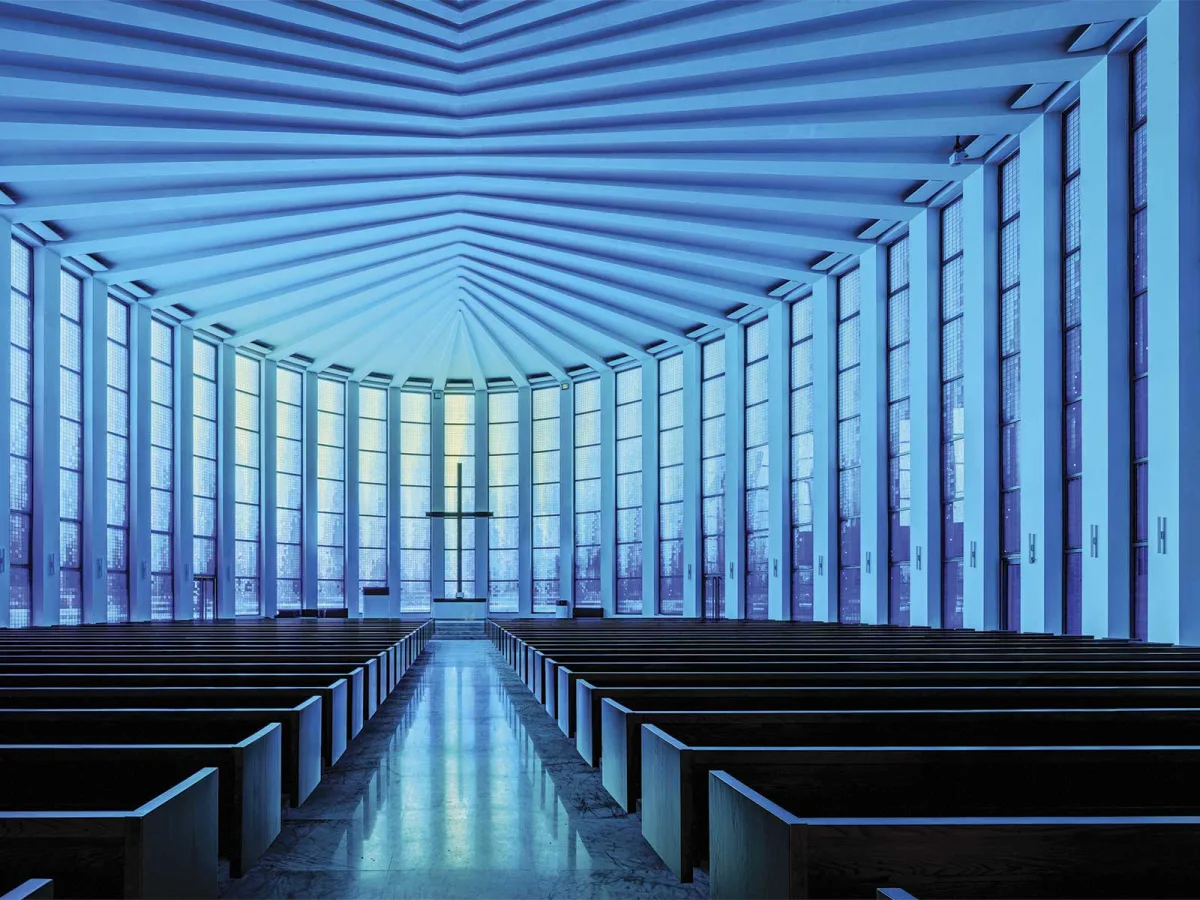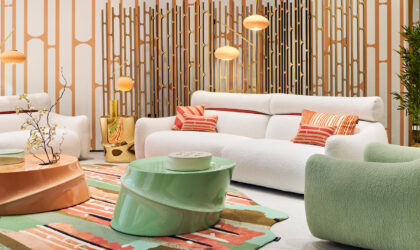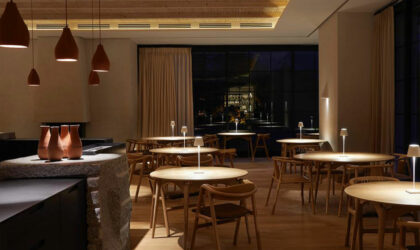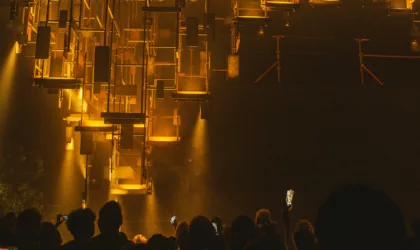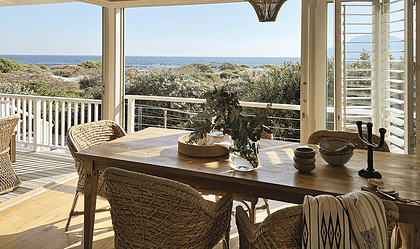Inspiring Awe
INUCE ARCHITECTS
Where: The Church of Luoyuan can be found in its namesake coastal fishing village in China and is home to the Congregation of Luoyuan, a traditions-focused Christian community whose origins trace back to 19th century British missionaries. Known for its terraced tea plantations, Luoyuan is rich in granite deposits, the mining of which in recent decades has sullied the landscape with quarries, factories and high-rises. The church was conceived as a place of refuge for this fast-modernising community.
The architect: With offices in both Switzerland and China, Inuce’s principal architect Dirk Moench is well versed in designing churches. His work includes a pink pebbledash extension (with rooftop amphitheatres) to the Huaxiang Church in Fuzhou.
The church: Additional to the church, the building houses a youth hall, classrooms, and tea house, and takes its curvilinear form from regional Tulou houses, their traditional ring shapes enclosing a central green courtyard. The auditorium of the church has capacity for 1 200 congregants and was designed by Moench to fuse Christian and Chinese traditions. “The interior is illuminated by a huge window made from almost 108 000 individual pieces of stained glass, each 10cm square in size,” he explains of his reference to Christian churches. “At night the stained glass will be illuminated from within the void between inner and outer facades, transforming the church into a shining beacon.” With over 1 412 sqm of glass surface area, the structure constitutes the largest stained-glass façade in China, and one of the largest worldwide. On its colour (21 shades of blue), Moench elaborates: “It exudes an atmosphere of profound blue, carrying believers away to a metaphorical place deep down at the bottom of the ocean, in which daunting darkness is dispersed by an aura of divine light.”
www.inuce.com
—
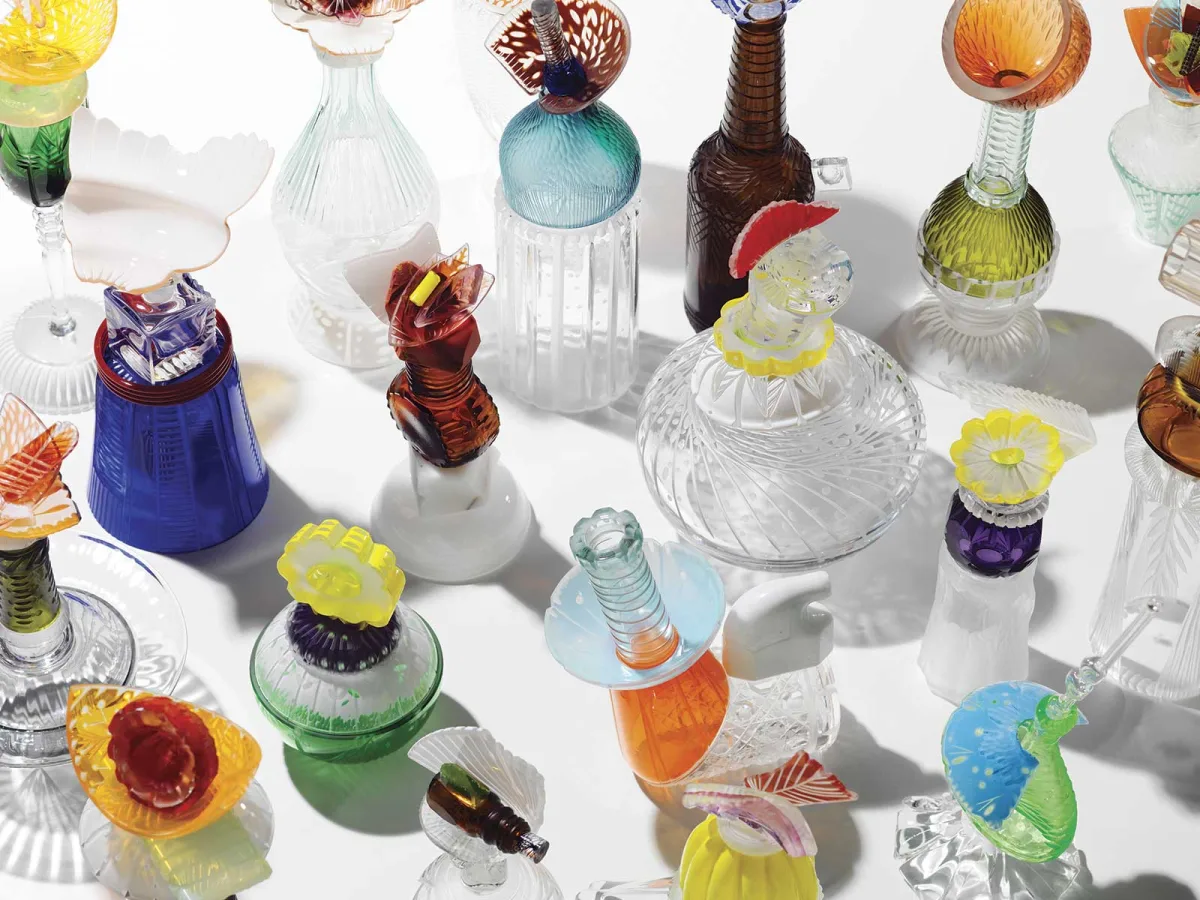
Repurposing Waste
JULI BOLAñOS-DURMAN
The Designer: “I act as a translator between the material and the idea of what the object can become,” says Juli Bolaños-Durman, a Costa Rican sculptor with qualifications in both graphic design and glass working. She works from a shared multidisciplinary studio in Edinburgh, where she’s lived for more than a decade. Her sculptures have been exhibited at London’s V&A Museum, Dutch Design Week and the Corning Glass Museum, New York.
The Sculpture: Ever conscious of global waste and our need to be more conscientious as consumers, Bolaños-Durman considers her works to be acts of rebellion. Collecting discarded glass with which to sculpt, she says, “I love the chance to give that piece of glass that was going to the bin a second chance.” Be it handmade or industrially manufactured, a decades-old frosted shard or a coloured beer bottle, for the sculptor the glass others discard is the starting point for her artworks. Pieces that, while aesthetically inspired by her Latin American heritage (like the riot of colour in her childhood garden), address the need for sustainability and recycling. “The work becomes a rebel. It’s not just a pretty sculpture, it is so much more than that,” she says. “It’s not just thinking about the material as something that’s here to serve us, it’s about how we can serve the material. How can we show it compassion?” The sensitivity with which she addresses her material comes into its own when Bolaños-Durman cold-works. Using sandpaper, stone and diamond points, she etches, smooths, cuts and reshapes repurposed glass before constructing her assemblages. Her message may be concise, but her collections – with titles like The Isles of Reclaimed Wonderment and Ode to Intuicion – are playfully charismatic, intentionally wonky, vibrantly colourful.
www.julibd.com
—

Interrogating Perceptions
GERMANS ERMIčS
The Designer: Latvian-born Germans Ermičs describes his furniture as “two-dimensional thoughts materialised in objects”, apt for a designer whose studies were primarily of two-dimensional disciplines: graphic design followed by interior design at Design Academy Eindhoven. He founded his studio in Amsterdam in 2014, has received accolades in the 2017 and 2018 Wallpaper* Design Awards, and exhibits furniture at Salone del Mobile in Milan and Design Miami/Basel.
The Furniture: The angular forms of Ermičs’ pieces benefit from being seen from all sides, their linear contours immediately softening as panels of coloured glass create Ven diagram-like overlaps of nuanced colour. “I’d like to make people look at the glass, not through the glass,” Ermičs explains of his chairs, tables, consoles and mirrors. This he achieves less through form (his pieces comprise minimalist interlocking panels free of screws) and more through engaging and seductive surface treatments. Ombre colours, monotone or multi-hued, lead the eye around his pieces. He embraces frosting to blur the edges of his forms. And mirrored effects often serve to unsettle one by reflecting and interrogating personal space. All this to leave us questioning glass’s often unfavourable reputation as “fragile, dangerous and cold.” Altering perceptions is very much at the forefront of his pieces including the throne-like Sunburst Tall Glass Chair and Ombre Glass Chair, the latter an homage to Japanese industrial designer Shiro Kuramata’s 1976 seat. “You can sit on it, but it’s not going to be your everyday chair,” he says of his tribute, “It’s an art object.” Much like the works of the Minimalists of 1960s Southern California (artists like James Turrell and Doug Wheeler), Ermičs’ designs, through creative and at times unsettling use of light, colour and space, leave us questioning established perceptions of our environments.
www.germansermics.com
—
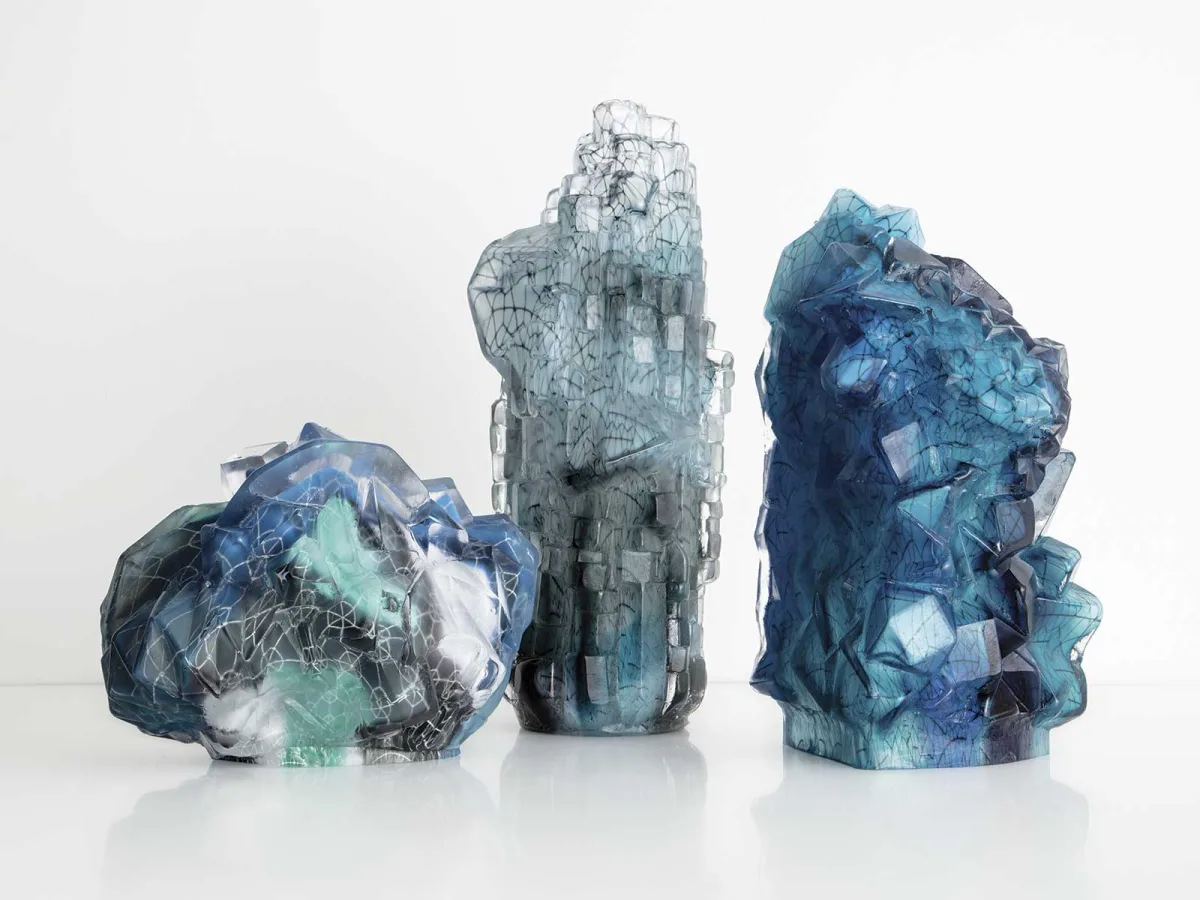
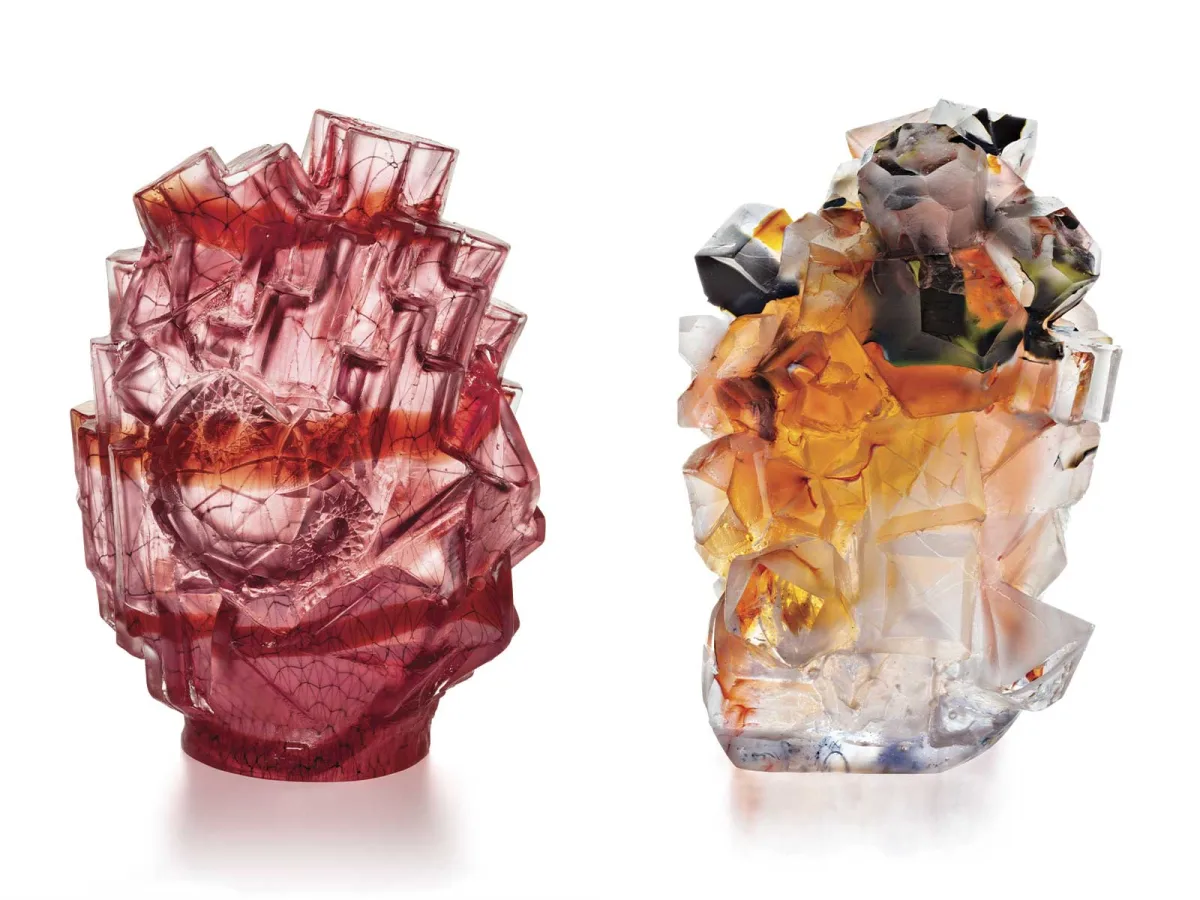
Reimagining Architecture
STINE BIDSTRUP
The Artist: A self-described ‘glass geek’, Danish artist, art historian and educator Stine Bidstrup holds degrees from the Royal Danish Academy of Fine Art, Rhode Island School of Design and the University of Copenhagen. She teaches at institutions around the world and has works in multiple collections. “My pieces celebrate all the things you can do with glass in terms of light and colours and levels of translucency, transparency and opacity,” she explains.
The Work: Bidstrup’s works challenge the act of seeing. Forced to regard the complex nature of their surfaces – reflective, smooth, rough and matte, one equally has to consider their spatial depths, faceted forms and art historical references. But that doesn’t guarantee immediate understanding, for her works intentionally defy easy interpretation. “My ideas derive from wanting to understand and visually interpret the complexity of utopian ideas in the cultural history of glass,” she explains. Bidstrup’s Architectural Glass Fantasies series is inspired by The Crystal Chain, the post-WWII correspondence project of a handful of German architects who exchanged letters discussing what form the architecture of the future should take (specifically coloured glass and steel as ‘gateways’ to an ideal society). Her series Imaginary Crystallisations appears inspired by both natural crystalline forms and digital constructs coded by computer. They’re these polarities and more – pieces that combine intellect with technical skill. “Glass is far from an easy material to work with, and I tend to make a hard thing harder by developing several complex ways of creating form and pattern and combining them into one work,” she says. “I use a spectrum of techniques – glassblowing, glass-casting, fusing and stretching, cold-working, gluing and painting in my pieces to create dense layers of information and meaning.”
www.stinebidstrup.dk
—
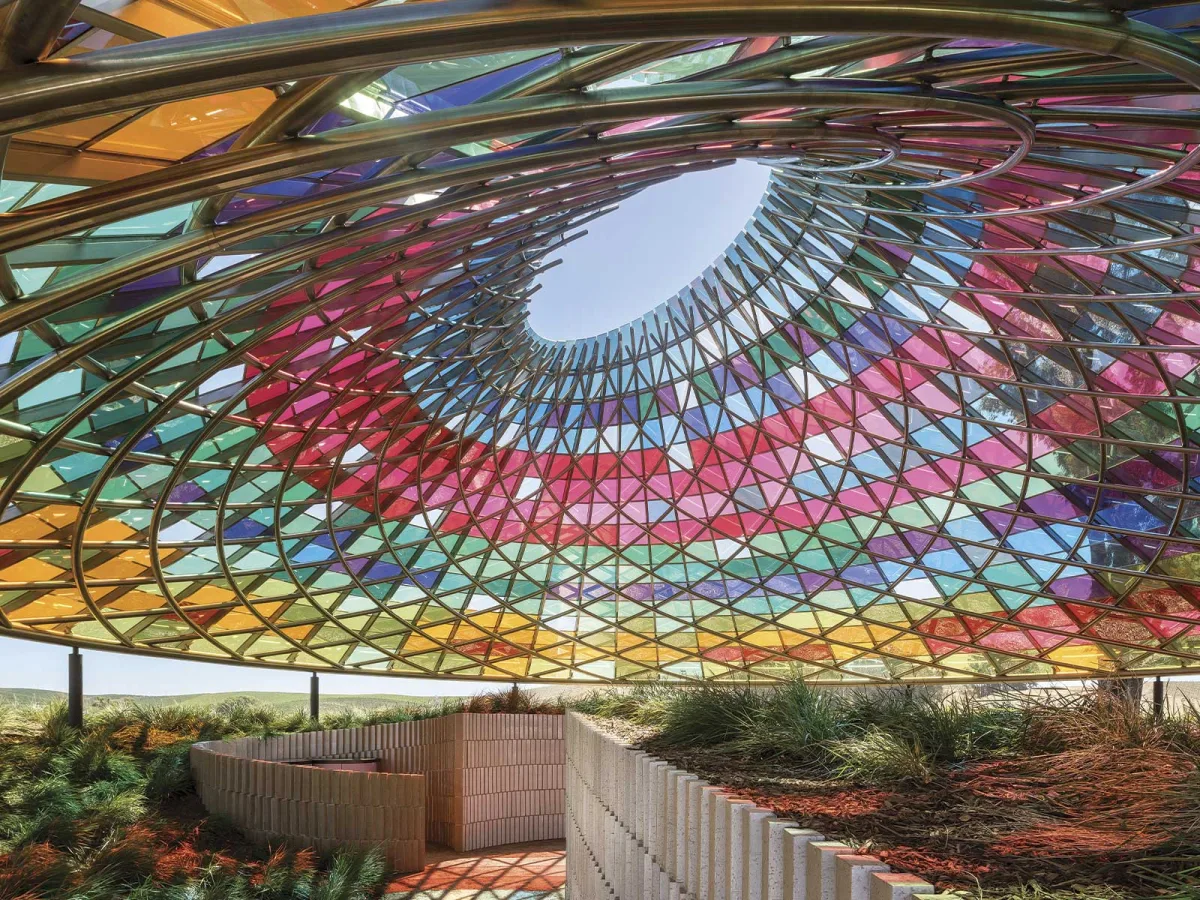
Colouring Shade
STUDIO OTHER SPACES
Where: Vertical Panorama Pavilion on the Donum Estate is in Northern California’s Carneros valley, itself nestled between the world-renowned Sonoma and Napa wine counties. The Donum Estate this year celebrates its 21st year as a single-vineyard, single-appellation Pinot Noir wine farm. It’s also home to one of the largest accessible private sculpture collections globally, which includes works by artists Ai Weiwei, Keith Haring and Louise Bourgeois.
The Design Duo: Studio Other Spaces is a Berlin-based interdisciplinary architecture and art venture founded by artist Olafur Eliasson (most known for The Weather Project installation in Tate Modern’s Turbine Hall in 2003) and architect Sebastian Behmann. Together, under the banner of Studio Other Spaces, they create spatially experimental artworks and building projects for public spaces.
The Pavilion: Intended as an event and wine tasting venue, the space beneath the glass canopy offers panoramic views across the wine estate and San Pablo Bay. The impressive conical canopy is almost 15 metres in diameter. It beautifully catches the light while simultaneously colouring the space below in an array of 24 hues, all chosen from the surrounding landscape and intended to blend within it. According to Behmann, the canopy was inspired by the history of circular calendars. It is glazed with 832 coloured laminated glass panels (with variations in transparency) that depict yearly averages of the estate’s four meteorological parameters – solar radiance, humidity, temperature, and wind intensity. “The design elements are abstractions of components taken from a vertical slice through the pavilion’s location on the estate,” explains Eliasson, “The pavilion maps out the surrounding ephemera – the soil, vegetation, wind, sun, atmosphere, and rain – and incorporates these into a colourful canopy.”
www.studiootherspaces.net
by Martin Jacobs
